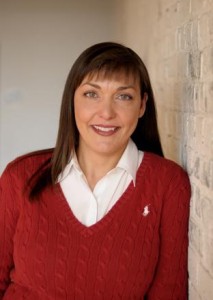
Four friends give thumbs up, smile and look at camera. They are wearing casual clothes and are standing close to each other. This photo is perfect for representing friendship, teamwork, positivity, and success.
Take It To The Team – Interview with Angela Johnson from Aequitas Consulting
As you may have noticed, the newsletter – The Way Forward – has been spotlighting different consultants, coaches and practitioners. While the spotlights were great, I felt that we were not leveraging enough of their perspectives and experiences, so starting this month I will be including a short interview with the people who are going to be spotlighted in the newsletter.
Contrary to what you might have heard me say, my perspective is not the only way to do Scrum, to be successful with Scrum or to think about how the framework fits into an organization. There are lots of different people with varied experiences and backgrounds that shape how they frame the challenges of adopting Scrum and creating a successful adoption. My goal with the spotlights in the newsletter, and the interviews on the website, is to introduce you to people from all over the US and from all over the world (my reach is pretty large) and offer you the opportunity to hear their perspectives and the different ways they have answered the question “How does my company adopt Scrum?”
Our very first interview is with my fellow Certified Scrum Trainer Angela Johnson from Aequitas Consulting. Angela is based in the Minneapolis area, has a great deal of experience with using Scrum and Agile and as it turns out she is VERY busy!
 How did you get started with Scrum? My first Scrum project was shortly after a brief experience with Lean Software Development in the mid-2000s. Without really knowing what I was getting myself into, I accepted the role of a ScrumMaster. I entered the experience thinking this was another term for project management or a methodology. When I rolled off of the engagement, I was a convert in understanding the people side of Scrum and the ScrumMaster as the process enabler.
How did you get started with Scrum? My first Scrum project was shortly after a brief experience with Lean Software Development in the mid-2000s. Without really knowing what I was getting myself into, I accepted the role of a ScrumMaster. I entered the experience thinking this was another term for project management or a methodology. When I rolled off of the engagement, I was a convert in understanding the people side of Scrum and the ScrumMaster as the process enabler.- What was the biggest challenge you personally had to overcome in order to do Scrum well? Resisting the temptation to give an answer or go and get the answer. I had to learn to “take it to the Team”.
- Why are you still passionate about Scrum today? I am passionate about Scrum because I have seen the rapid delivery of business value for clients who I have coached through this process. There is one in particular who has become so high-performing they can literally offer their franchise owners the lowest possible transaction cost per transaction because they are poised to work with any partner they want to.
- What do you think are the biggest challenges of doing Scrum well for Teams? For a large enterprise? For Teams, it is understanding the value of working together in a cross-functional way. Many believe they have to become a generalist to do Scrum rather than to see all that is being asked for is to help each other get to Done any way possible. Nobody is asking anyone to abandon their core skills. For a large enterprise, the biggest challenge is to resist the temptation to put Scrum in the Waterfall. Many large enterprises are unwilling to create dedicated teams, to focus the Product Backlog and allow Teams to perform. They want to use Scrum, but only if they can divide Team members’ time into 24% on this “project”, 25% on that “project”, etc.
- What are the top three things someone should be doing the first year after taking a CSM course? First, work as a Team member, or a ScrumMaster, and truly use the process. Second, join an online, or in-person, usergroup as a way to share your experiences, get feedback, etc. Third, engage with the Scrum community by attending a Scrum Gathering.
- What is your favorite book on Scrum? Why? My favorite book remains Coaching Agile Teams by Lyssa Adkins. For me, this book speaks to the people side of what’s needed to truly help Teams embrace this way of working. By sharing her own story with readers, Lyssa highlights some of the struggles in transitioning from traditional ways of working to adopting Scrum.





